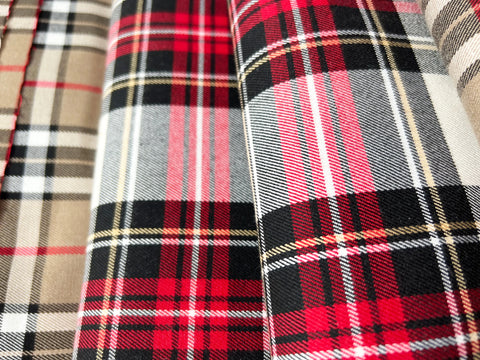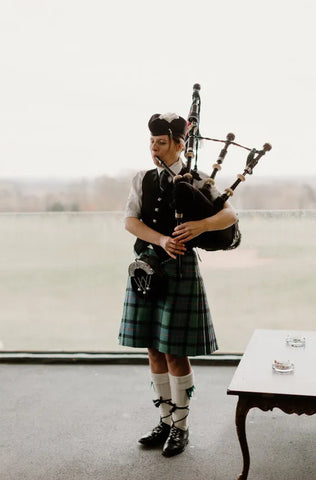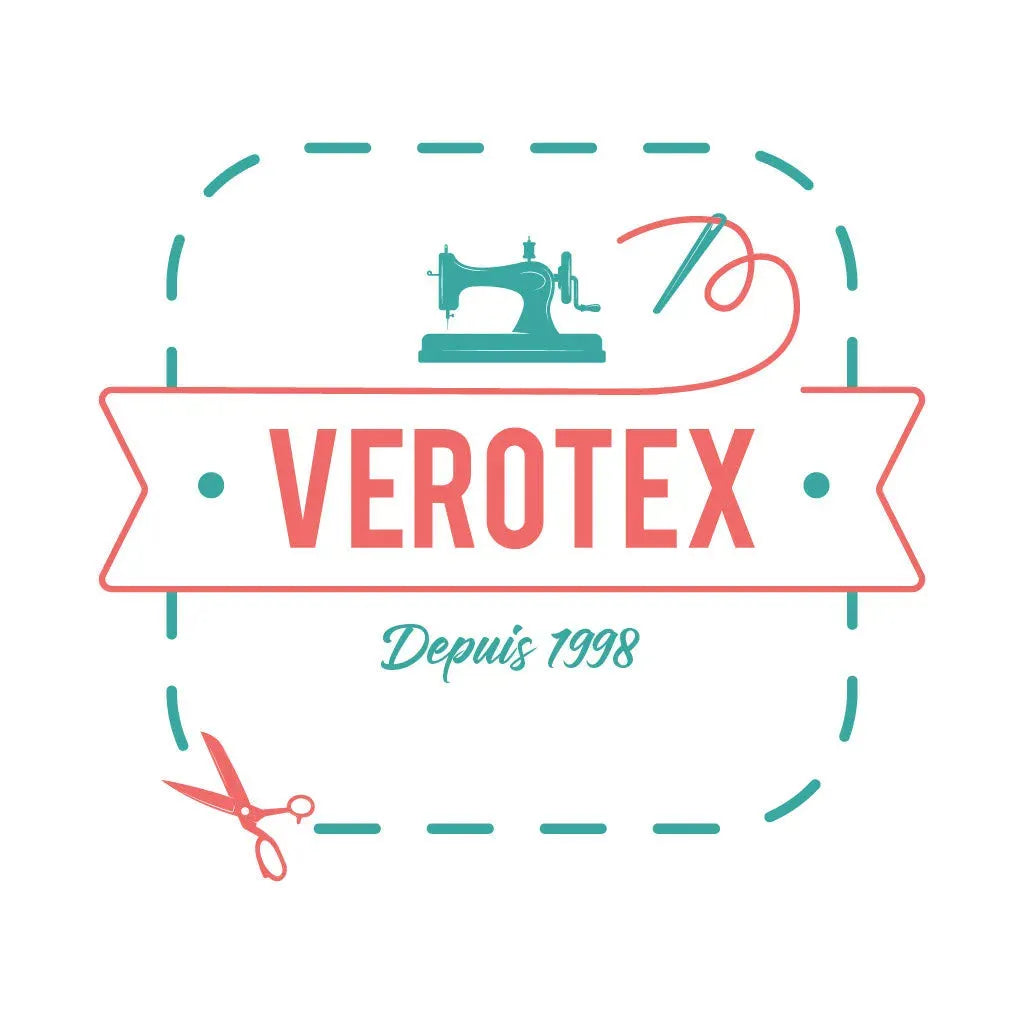table of contents:
Delve into the rich history of tartan with our in-depth article, exploring the cultural significance and many uses of this iconic pattern. Discover how to incorporate tartan into your designs to add a touch of elegance and tradition.
What is tartan?
Tartan is a checkered fabric pattern often associated with Scotland and its traditional culture. It consists of horizontal and vertical lines that intersect to form a variety of patterns and colors. Traditionally, each Scottish clan had its own distinctive tartan, making it easy to identify clan affiliation. Today, tartan is widely used in fashion and home decor, bringing a touch of elegance and nostalgia to a variety of products. Whether in clothing, accessories, or even furniture, tartan adds a timeless and authentic touch to your style.

The History of Tartan: A Journey Through the Origins and Symbols of the Check Pattern
Tartan is a distinctive checkered pattern with a fascinating history deeply rooted in Scottish culture. Its origins date back centuries, when it was worn by Scottish clans to identify their affiliation with a specific family or tribe. Each clan had its own tartan pattern, consisting of specific colors woven into a distinct checkered pattern.
Tartan is closely linked to the history of the Scottish Highlanders, who were known for their courage and pride. Tartan patterns were considered a symbol of identity, loyalty, and clan affiliation. They were also used to distinguish between different Scottish military regiments.
Over time, tartan evolved and became more widely adopted outside of Scotland. It became a popular pattern in fashion and home decor, symbolizing both classic style and Scottish heritage. Today, tartan is used in a variety of products such as clothing, accessories, soft furnishings, and even stationery.
Today, tartan continues to be a symbol of Scottish culture and clan pride. It is also valued for its versatility as a design motif, bringing a touch of Scottish charm and tradition to various products and creations. Whether in fashion, home decor, or gifts, tartan offers a timeless aesthetic and a connection to a rich cultural heritage.

Tartan Pattern Making: Weaving Process
The tartan pattern is usually woven from wool yarns, although other materials such as cotton, polyester, or fiber blends can also be used. The choice of material determines the weight, texture, and properties of the final tartan.
The tartan-making process begins with choosing threads of different colors. Each color represents a separate thread that will be woven to create the tartan checks. These threads are then carefully aligned and wound onto bobbins or spindles, ready for use on a loom.
The loom is prepared by laying down the weft and warp threads, which form the basis of the weave. The weft threads are those that are woven through the warp threads to form the tartan checks. The warp threads, on the other hand, are kept taut and vertical on the loom.
The weaver uses a specific system of crossings to interweave the weft and warp threads, following a precise pattern. It is this crossing technique that creates the characteristic checkered pattern of tartan. Each check is formed by alternating weft threads passing over or under the warp threads.
The tartan weaving process requires great precision and attention to detail to achieve a symmetrical and consistent pattern. Once weaving is complete, the tartan is cut and finished as needed, whether for clothing, accessories, or home textiles.
Tartan making is an art that requires time, patience, and technical expertise. It is through this meticulous process that tartan acquires its distinctive beauty and appearance, reflecting the history and tradition of Scotland.
Whether for kilts, scarves, jackets, or home decor, tartan remains a timeless and versatile choice. Its enduring pattern and connection to Scottish culture make it a symbol of authenticity and elegance.

The properties of tartan
Tartan has several properties that make it a unique and popular fabric. Combining these properties, tartan has become a popular choice for many sewing projects, offering style, durability, and a connection to Scotland's rich history.
Distinctive checkered pattern
Tartan is famous for its checkered pattern, composed of intersecting horizontal and vertical lines. Each tartan pattern is unique and can be associated with a clan, region, or family in Scotland. This characteristic makes tartan a recognizable and symbolic fabric.
Sustainability
Tartan is usually made from natural fibers, such as wool, which give it great durability. It is hard-wearing and can therefore be used to create clothing and items that last over time.
Heat
Due to its composition of wool or other natural fibers, tartan provides excellent thermal insulation. It is able to retain body heat, making it an ideal choice for winter clothing such as coats, scarves, and blankets.
Comfort
Tartan is soft and pleasant to the touch, providing optimal comfort when worn next to the skin. The natural fibers used in its manufacture allow the skin to breathe, preventing the build-up of moisture and perspiration.
Versatility
Tartan can be used for a wide variety of sewing projects. It is commonly used to make clothing such as kilts, jackets, skirts, shirts, and accessories such as scarves, bow ties, and bags. It is also used in interior design to create curtains, cushions, and throws.
Uses of tartan
Tartan offers a wide range of design possibilities, whether for clothing, accessories, or home decor. Let your creativity run wild and explore the different ways to incorporate tartan into your sewing projects for a result that's both traditional and fashionable.
Traditional clothing
Tartan is often associated with traditional Scottish clothing such as kilts. You can sew a kilt for an authentic and elegant look. Additionally, you can use tartan to make jackets, skirts, trousers, and shirts with a Scottish touch.
Accessories
Tartan is perfect for creating unique and stylish accessories. You can sew tartan scarves, headscarves, hats, bow ties, ties, and handbags to add a touch of sophistication to your outfit.
Interior decoration
Tartan is also ideal for adding a touch of elegance to your home decor. You can sew tartan curtains, cushions, throws, and blankets to create a warm, traditional feel in your home.
Patchwork
The tartan check pattern lends itself perfectly to patchwork. You can use pieces of tartan in different colors and patterns to create unique and colorful blankets, cushions, or rugs.
Party clothes
Tartan can be used to sew original and eye-catching party wear. For example, you can make tartan evening dresses, cocktail dresses, or festive skirts for special occasions.
Sewing projects for children
Tartan is also suitable for children's sewing projects. You can sew children's dresses, shirts, shorts, or skirts with tartan, creating adorable and unique outfits.

Tartan Maintenance
Tartan care is essential to maintaining its beauty and durability. By following these care tips, you can preserve the beauty and quality of your tartan for many years to come. Be sure to consult the manufacturer's specific instructions for additional recommendations based on the type of tartan you own.
Washing
It is recommended to hand or machine wash the tartan according to the manufacturer's specific instructions. Use cold or lukewarm water and a mild detergent to preserve the colors and quality of the fabric. Avoid rubbing or twisting the tartan when washing to prevent distortion.
Drying
After washing, it's best to let your tartan air dry rather than tumble dry. Lay it flat or hang it gently to avoid wrinkling and warping. Avoid direct sunlight, as this can cause the fabric to fade.
Ironing
If necessary, iron the tartan at a low temperature, making sure to use a damp cloth or thin cloth between the iron and the fabric to avoid damaging the fibers. Be sure to follow the manufacturer's specific instructions regarding ironing temperature.
Tartan is a versatile and iconic fabric that combines both style and tradition. Whether used for clothing, accessories, or home decor, tartan brings a distinct and timeless touch to your designs. Its rich history and varied patterns make it a popular choice for fashion lovers and those passionate about Scottish culture. Express your style and commitment to tradition with tartan, a fabric that never goes out of style.
We offer several simple tutorials on our blog if you are new to sewing, also find us on Facebook , Instagram and TikTok !











































Leave a comment
All comments are moderated before being published.
This site is protected by hCaptcha and the hCaptcha Privacy Policy and Terms of Service apply.